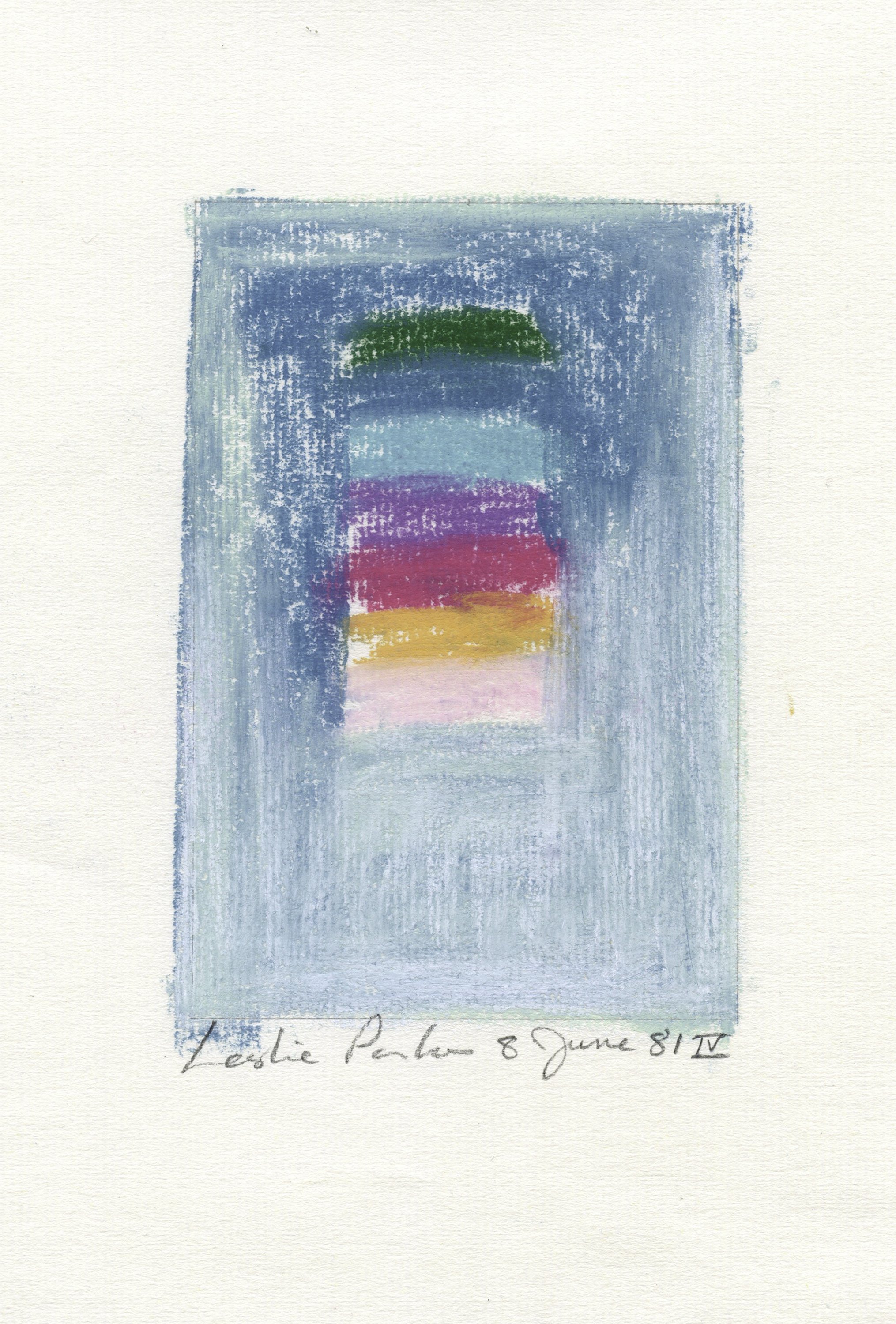January Notes - 2024
The drawings I started doing in the early 1980s, began out of necessity. During a relentless Arctic weather pattern, I could not heat my studio. It was so cold even the gas in my car froze.
Out of desperation, I set up a place to work next to my wood stove in my apartment. I had just enough space to do small works on paper.
I don't know how I came up with the idea, but at some point, I contrived what I later called a “key.” It was lines that I put in the center of the drawing that consisted of primary colors, secondary colors, and black, white, and gray. It had ruled edges and non-rule edges, straight lines, and curves. It embodied all the elements needed to make a painting.
The “key” was an anchor. Around this anchor, I proceeded to add the kitchen sink. It allowed me to explore with both an anchor and a nonspecific destination. One drawing suggested another.
If I'm not mistaken, they may have been inspired by an exhibition of shaped works by Frank Stella. It seems commonplace now, but when he put shaped canvases on the wall, it was as radical as the change from academic painting to Impressionism or from Picasso to Pollock. Stella had blown up the picture plane. It was one of those moments when you felt the ground shift from beneath your feet.
Over time, the drawings continued to explore painting ideas, whether it was about color, the use of form, or, eventually, as a means to take a deep dive into a specific painting by Matisse. (I'll save that for another time.)
These drawings took me places in my work. They also took me places in the world. They spurred a collaboration with Pulitzer Prize-winning composer Henry Brant that was performed at the Holland Festival, and they also landed me at a dinner with Clement Greenberg, as I quoted before: “Even the largest avalanche is triggered by small things.”
See the full collection of the early drawings here.
HISTORY SPOTLIGHT: PAIRINGS - Valesquez and Fra Angelico
-
beckoning you to ascend, but perhaps also to look in awe. I am not qualified to remark on the religious implication of this, but the very position of the image dictates your approach and implies the attitude with which to make the approach.
The second painting, where the positioning of the painting dictates one's reaction to it, is Velasquez Las Meninas, in the Prado. It is a mysterious painting, and lots of ink has been expended in trying to explain it. Nothing about it made sense to me until I stood before it in the Rotunda of the Prado. Staring at it from the middle of the Rotunda, I realized that I was the missing piece in the painting.
Velasquez is at his easel looking at me, and by implication is painting me. But reflected in the mirror behind Velasquez is Philip IV and his wife, Mariana of Austria. Was Velasquez therefore implying that I was the King and Queen? Was this a revolution in a painting? A complete upheaval of hierarchy. Velasquez left us to decide for ourselves.
Reading about the painting in Wikipedia, I found out that the painting was originally in the private quarters of Philip IV, and in that setting the meaning of the painting could be quite different. And then again, there is a question if the reflection in the mirror is that of the King and Queen, or is it the painting of the King and Queen on which Velasquez is working.
Quantum physics is easier to explain than this painting.
FROM THE LIBRARY : PICASSO’S WAR: How Modern Art Came to America
Picasso’s War: How Modern Art Came to America by Hugh Eakin, not to be confused with Picasso's War: The Destruction of Guernica and the Masterpiece that Changed the World by Russell Martin (which I haven’t read).
I think that “Picasso’s War” is a bit of a misnomer, but then again, who would pick up a book about a renegade Irish American lawyer named John Quinn, who set out to amass the largest collection of Picasso paintings, and how his efforts ultimately led to the establishment of the Museum Of Modern Art in New York and the triumph of Alfred Barr?
This is really a book about the people who were passionate about the new art, the few collectors and some of the great dealers, like Rosenberg, and what they did to promote this work and then protect it during the War. It is a fascinating look at the interrelationships of the dealers, collectors, and museum directors with Picasso and other artists.
Some would consider this inside baseball. It’s just my cup of tea.
I listened to this as an audio book.
ART SPOTLIGHT: RIVER OF PAINT - BLUE
For years I used photographs to inform my paintings. Now I have turned the tables and am using my painting process to inform my photographs. I like my photographs to appear abstract and like a painting but to be of something real, pushing beyond issues of abstraction and representation to engage deeper issues of perception and recognition, and ultimately the nature of the visual world and how we comprehend it.








